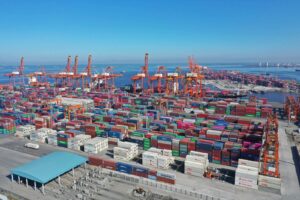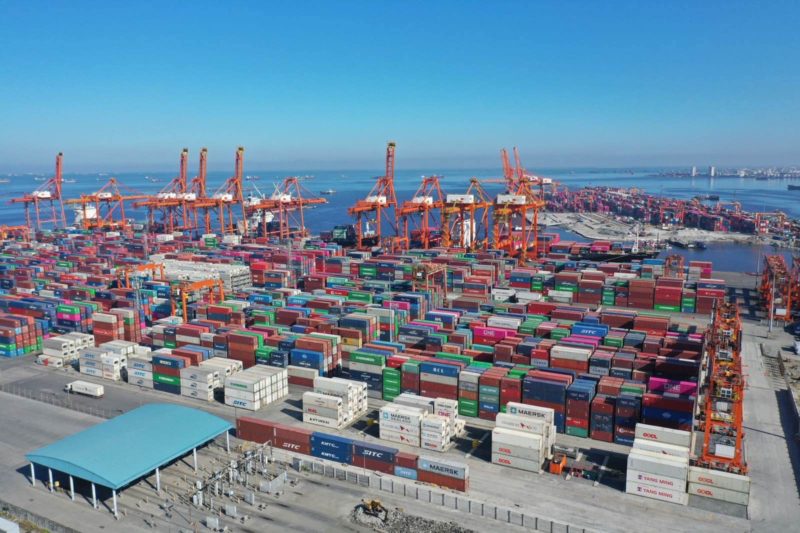-
Two days is the average time to process import entry in Bureau of Customs-Manila International Container Port, according to a BOC time release study
-
Average time to process import at MICP (from when ship docks to when goods leave facility) is 10 days, 19 hours and 18 minutes
-
Processing time for release of shipments at MICT took much longer (4 days 16 hours and 39 minutes) than the time it was processed by BOC (two days, 10 hours, and three minutes)

Full computerization and automation will address delays in processing and release of shipments at ports, according to a time release study (TRS) conducted by the Bureau of Customs (BOC) at the country’s biggest port and collection district, Manila International Container Port (MICP), in 2019.
The study said the practice of having customs brokers/representatives file, submit and bring documents from one office to another and the inability to transmit permits from government agencies directly to BOC “highlight the need to institute a paperless environment in customs.”
The study also suggested a more aggressive implementation of programs recognizing and rewarding compliant traders, such as the Super Green Lane (SGL) facility and Authorized Economic Operator (AEO), to encourage traders to invest in compliance and adopt best practices.
In addition, stronger coordination and online linkage with other government agencies on the issuance of permits, clearances, and other supporting documents so these may be transmitted directly online was suggested, as was an information technology (IT)-based risk assessment and targeting system to increase efficiency in clearing of low-risk shipments, and ensure Customs focuses its priorities on deploying limited resources to areas of highest risk.
The TRS was just recently uploaded on the agency website and was conducted “to determine the problems or bottlenecks in the processing and release of both import and export shipments.”
A TRS working group undertook the study for seven working days in October 2019, following the model of the World Customs Organization’s (WCO) Guide to Measure the Time Required for the Release of Goods Version 3. The group was assisted by the WCO and Asian Development Bank, with brokers, importers, and exporters also involved in the study.
Key findings of the study:
- The overall average time it takes to process an import from the time the ship docks at the MICP up to the time the goods exit the port terminal facility is 10 days, 19 hours and 18 minutes.
- Shipments on the red lane have the highest average time of 11 days, five hours, and 51 minutes. The lowest average time is for the SGL/blue lane with seven days, 14 hours and six minutes.
- The average time for shipments on the yellow lane is 10 days, 22 hours, and 35 minutes while shipments on the green lane had an average time of nine days, 10 hours and 30 minutes.
- The overall average time to process an import entry within the BOC domain—covering registration, assessment, Import Assessment Service (IAS) verification, payment, and Online Release System (OLRS)—is two days, 10 hours, and three minutes.
- From arrival of the vessel to single administrative documents (SAD) registration, which is pre-Customs, the overall average time is two days, eight hours and 16 minutes.
- Value verification takes two days, six hours and 24 minutes on average. The study noted that among the entries covered by TRS, only one shipment, which belonged to the yellow lane, underwent IAS verification.
- The overall average time for payment is 18 hours and 25 minutes and transmittal of online release instruction to the OLRS is just 9 seconds.
- The overall average time from inward foreign manifest/ship arrival to OLRS/Customs release is four days, 18 hours and 20 minutes.
- Time spent on X-ray inspection is one day, six hours, and 34 minutes.
- For the process after customs and within the domain of the port terminal operator, the overall average time is four days, 16 hours and 39 minutes.
- For exports, the overall average processing time from the time the export declaration is lodged in the system up to the time clearance is issued is three days, 13 hours, and 29 minutes.
- From submission of export declaration to issuance of authority to load, which is within the domain of BOC’s Export Division, the export declarations are processed with the average time of one hour and 11 minutes.
- From the time Export Division issues the authority to load to the time Bay Service issues the clearance, the time average is 2 days, 15 hours, and 39 minutes.
- The overall average time from submission of export declaration to shipping lines to approval of sequence of loading is one day, 12 hours, and 24 minutes.
- The average time from approval of sequence of loading to issuance of clearance by the Bay Service is one day, and 37 minutes.
- From X-ray examination for red-tagged shipments to issuance of authority to load, the overall average time is one hour and nine minutes.
Post-customs takes longer?
The TRS said that based on the findings, “we can conclude that the processing time for the release of the shipments at the terminal took much longer than the time it was processed by Customs.”
“While Customs has an overall average time of 2 days, 10 hours and 3 minutes, the post-customs process took 4 days 16 hours and 39 minutes,” the study noted.
In stakeholder meetings conducted in preparation for the study, customs brokers had mentioned that delays were experienced post-Customs due to the long queue at the Terminal Appointment Booking System (TABS), tedious payment process, and the slow movement of trucks going in and out of the terminal.
However, the TRS noted these factors may only be confirmed if a deeper study and another TRS are conducted for comparison of data.
For the SAD registration, the TRS said delays are directly attributable to customs brokers/importers “as they are the ones required to lodge the SAD” and the delays are usually caused by incomplete documents.
The long hours to process an import entry, meanwhile, can be traced “to the fact that hard copies of documents are still required to be submitted and brokers/personeros are the ones who submit these documents directly to the examiners.”
Permits/clearance that have not yet been submitted also cause additional delay as the examiners put their transactions on hold until such documents are submitted, the TRS noted.
Delays were also noticed in the value verification process, attributable to the customs broker/importer failing to submit additional documents to support the value declared.
For export shipments, the issuance of clearance from the time the authority to load is issued still takes two days, 15 hours, and 39 minutes “because of a vital factor, which is the loading of the cargo to the vessel, which follows established sequence and rules on stowing, to avoid imbalance and to keep the vessel secure.”
“While delays in pre-customs and post-customs have been observed, BOC lamentably could not propose any solution as it is beyond customs control and that solution, if any, is totally dependent on the port operator, as well as with brokers/importers,” the TRS noted.
“Nevertheless, for delays that have been observed within customs, corrective measures may be instituted,” it added.
The TRS noted that since the study was conducted, BOC has already made several initiatives—particularly at MICP—to facilitate release of shipments. These include installing two additional portal X-ray scanners; establishing a one-stop-shop for submission of documents and for inquiry/follow-ups; and upgrading the IT systems at the port.
The study recommends another TRS to determine the impact of these trade facilitation enhancements, as well as the conduct of similar studies in other ports so problem areas or bottlenecks can also be identified and resolved.
READ: World Bank approves $88M loan for BOC modernization project
Relatedly, the World Bank (WB) recently approved a US$88 million loan to modernize BOC. The project, proposed by WB in 2017, is expected to improve the country’s customs administration through streamlining, automation, and development of a world-class customs processing system. – Roumina Pablo





